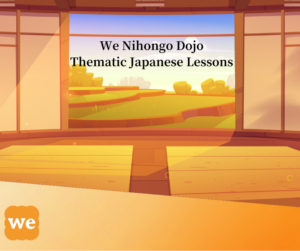
How would you explain mysterious sounds, supernatural phenomena, or the feeling when someone is watching you? In Japan, as elsewhere, they refer to these inexplicable occurrences and supernatural creatures mainly with the word “Yōkai” - Demons.
Do you know the most famous ones? Monsters, ghosts, and fantastic beings are currently popular in anime, manga, film, and computer games. Many Yōkai originated in local legends, folktales, and regional ghost stories.
Here's an easy guide to learning the most important vocabulary about Japanese demons and spirits' world!
How To Say "Demons" In Japanese? The Word "Yōkai"
Yōkai ・ようかい (in kanji: 妖怪) is the most common word to express the concept of "demon." You can translate it with the words spirits, goblins, specters, fantastic beings, and most commonly today, monsters. Two Chinese characters create this word, both of which denote strangeness, mystery, and suspicion.
Recently, this term includes the entire concept of mysterious phenomena and weird creatures. In brief, all things are beyond the realm of explanation. In fact, during past historical periods, other terms have been used. For example, the term 物の怪 Mononoke was commonly used in the Heian period. This one refers even today to evil spirits or invisible beings that can take possession of a human. Literally, it means “thing of the mystery,” with a sense of spookiness and mystery. 怪 (kai) is the kanji with the meaning “suspicious, strange,” as in the adjective 怪しい (ayashii). 物 (mono) refers today to a concrete thing. However, in the past, it referred to ghostly things such as souls or spirits, meaning something dangerous and uncertain.
You may know the word Mononoke because of the popular Miyazaki movie "Princess Mononoke" (もののけ姫 - Mononoke hime),
Different Types Of Japanese Demons: Oni ・鬼

Oni・おに is often translated as "ogre" or "demon." It's a sub-class of Yōkai and is often identified by one eye, two or one horn on their forehead. Oni is basically fantastic weird creatures which appear in folktales, legends, and, more recently, in manga, anime, and film.
Cultural fact: in Japan the game "play tag" is 鬼ごっこ - Oni gokko, so literally "play the ogre".
Other Terms For "Monsters": Obake・お化け - Bakemono・化け物
Obake・おばけ and Bakemono・ばけもの also mean "monster" or "ghost." The difference between Oni and Yōkai is in the ability the monster has expressed in the way of writing the words. In fact, the kanji 化 (ka) itself means “disguise, change.” So these two terms literally mean “changing things/thing that changes.” These different monsters include a change in their shape, a transformation, but they can also refer to an evil person or to somebody extremely large.
From Demons To Ghosts: Yūrei・幽霊
A subset of the larger category of Yōkai is Yūrei・ゆうれい, "ghost." Yūrei are people who have died with unfinished business of some sort. They wander in the present world and can be either vengeful or benevolent. A distinguishing characteristic is having no legs or feet and often haunting a specific person or place.
Among Japanese Demons: Animal Shaped Yōkai
Kaijū - 怪獣 and Kaibutsu - 怪物
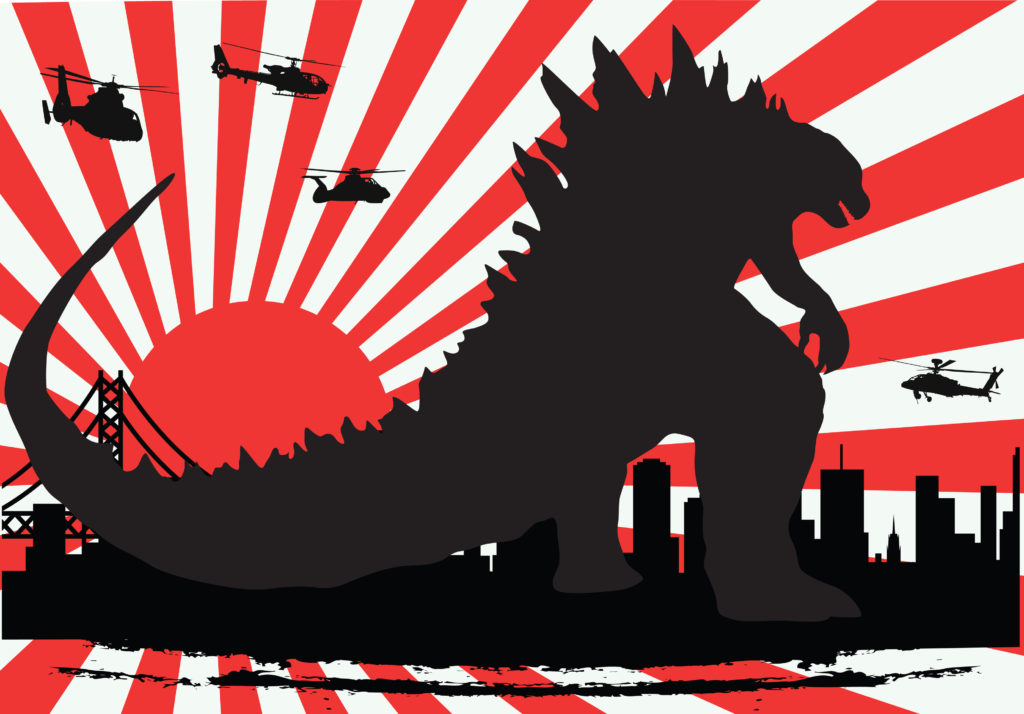
Another term to refer to monsters is Kaijū・かいじゅう. It refers to gigantic creatures, such as Godzilla! Just know that the word Kaijū is usually referred to physically giant creatures with commercial sources, movies, for example. So even though Godzilla is one of Japan’s most globally infamous monsters, in Japan Godzilla (Gojira) is not a Yōkai!
A synonym to this word is Kaibutsu・かいぶつ (怪物). First, it can refer to "a weird living thing" in general. But, on the other hand, you can use it to describe someone who is a genius or a wonder in a specific field:
| 政界の怪物 | Seikai no kaibutsu. | A genius in politics. |
| あの選手はまさに怪物だ。 | Ano senshu wa masani kaibutsu da. | That player is a real wonder. |
Did you know that the first movie about Godzilla came out in 1954? Check the details about Godzilla's movies in this article!
Kappa・河童
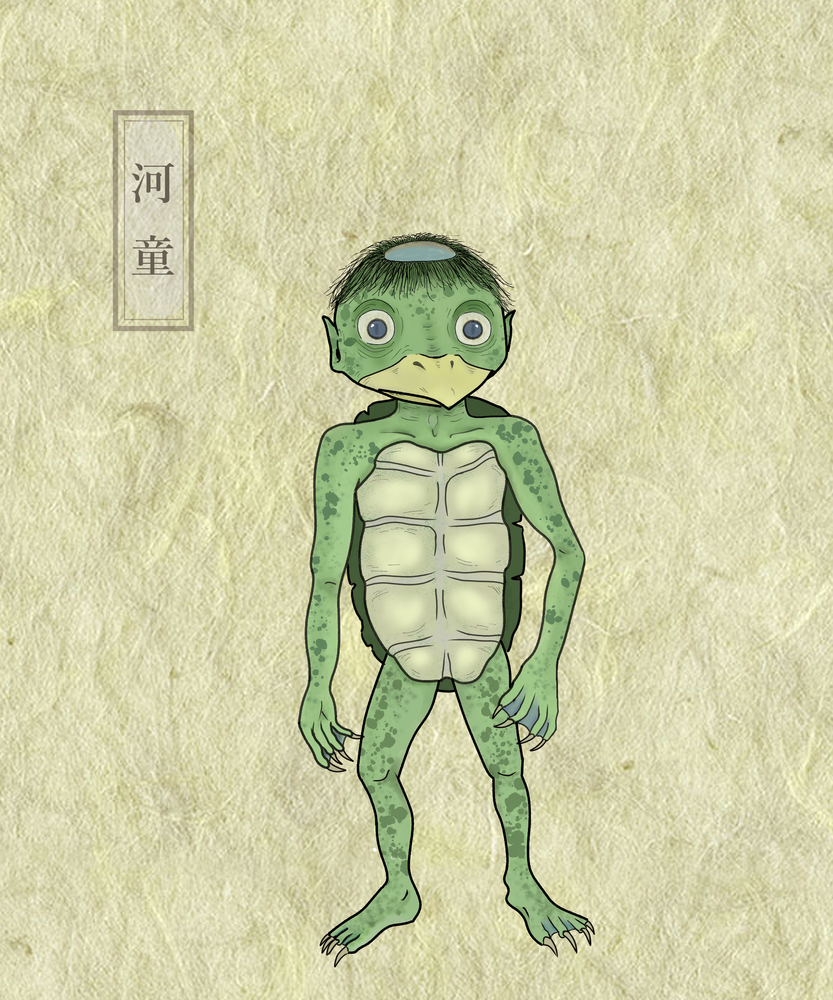
The Kappa・かっぱ meaning can be easily found in its kanji: 河 - lake or river, and 童 - child.
As you can see in the picture, a Kappa is a child-looking monster with webbed feet and hands, greenish in color, with a carapace on its back. Sometimes it resembles a monkey, and sometimes, a giant frog or turtle. They live in rivers or ponds and like eating cucumbers. Despite this, they are mischievous and sometimes deadly, notorious for drowning children and pulling horses and cattle into the water. If that all isn’t weird enough, Kappas can assault people from underwater, stealing a fabled “shirikodama” organ from a victim's anus.
However, nowadays they are often used for nationwide advertising campaigns and the promotion of local tourism. And it's not only a Japanese fact. Consider that Kappa has also appeared internationally, mentioned in Harry Potter and the Prisoner of Azkaban as a fantastic creature to study in the Defence of the Dark Arts class!
Tengu・天狗
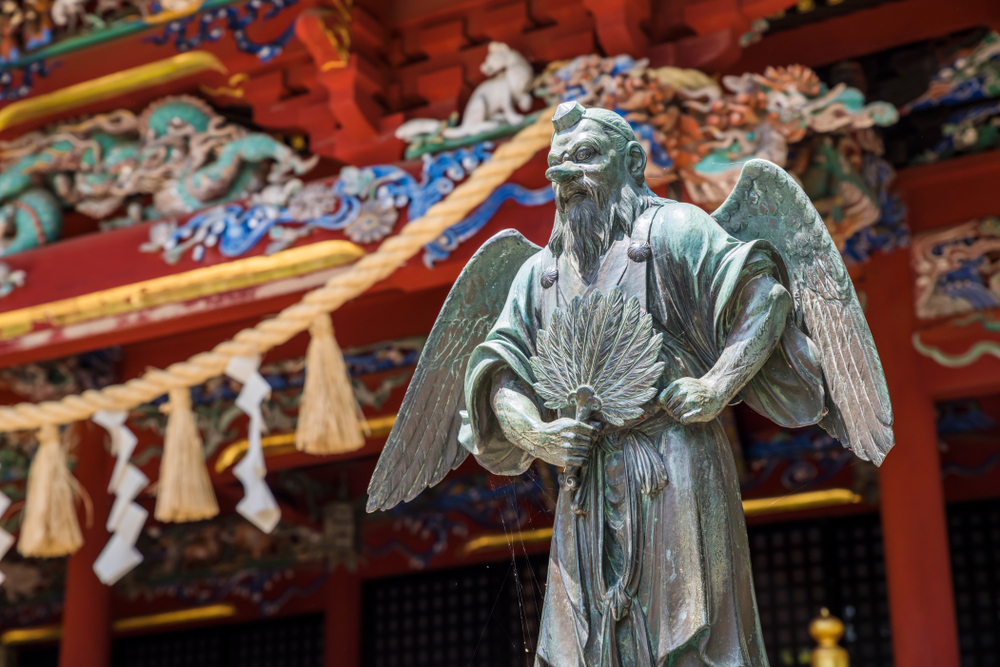
Tengu・てんぐ is one of the best-known of all Yōkai. They are like "mountain goblins," often associated with Buddhism. In addition, there are mountain shrines and festivals that honor Tengu. They are humanlike creatures with wings, having a long, bulbous, red nose, and superlative martial arts skills. The kanji for Tengu literally means "celestial dog." Originally, they were demons and symbols of war, but their image changed over time. Tengu are still powerful beings, but they’re now seen more as protective spirits, guardians of the forests and mountains.
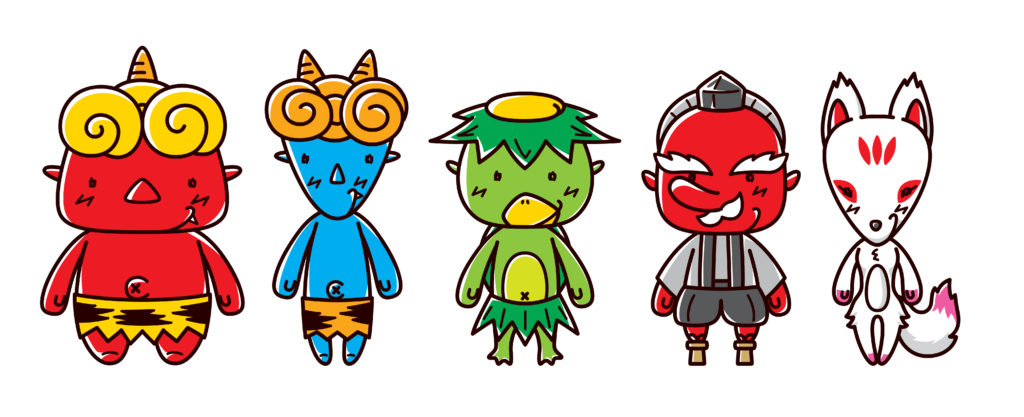
Author: Valeria (graduated from Ca’Foscari University Japanese Studies)
Did you enjoy our guide to Japanese folklore?
Start your Japanese journey with us!


